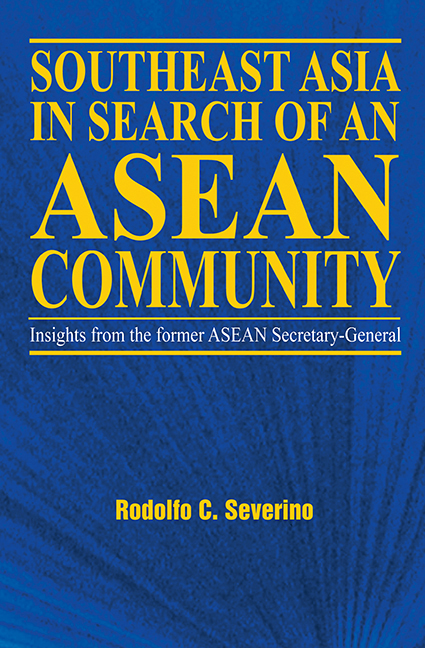Book contents
- Frontmatter
- Contents
- Foreword
- Introduction
- About the Author
- Acknowledgements
- Glossary
- 1 The “ASEAN Way”: Its Nature and Origins
- 2 Who Belongs in ASEAN? The Question of Membership
- 3 The Issue of Non-Interference
- 4 Regional Security: The ASEAN Role
- 5 Integrating the Regional Economy
- 6 ASEAN and the World
- 7 The ASEAN Community: Is It for Real?
- 8 What Kind of Future for ASEAN?
- Appendices
- Interviews
- Index
5 - Integrating the Regional Economy
Published online by Cambridge University Press: 21 October 2015
- Frontmatter
- Contents
- Foreword
- Introduction
- About the Author
- Acknowledgements
- Glossary
- 1 The “ASEAN Way”: Its Nature and Origins
- 2 Who Belongs in ASEAN? The Question of Membership
- 3 The Issue of Non-Interference
- 4 Regional Security: The ASEAN Role
- 5 Integrating the Regional Economy
- 6 ASEAN and the World
- 7 The ASEAN Community: Is It for Real?
- 8 What Kind of Future for ASEAN?
- Appendices
- Interviews
- Index
Summary
As the previous chapter stressed, the Association of Southeast Asian Nations was founded basically for political and security purposes, to prevent disputes and mutual suspicions from developing into conflict and to strengthen Southeast Asia's influence on regional and international affairs. As has also been noted, this is where ASEAN's supreme achievement lies. Nevertheless, ASEAN's founders felt compelled to highlight its economic, social and cultural purposes partly in order to gain public support for the new association, partly to allay suspicions that ASEAN was to be a military pact or a defence alliance, and partly because they were genuinely convinced that comprehensive development — or, as the Indonesians liked to say, national and regional resilience — was a necessary condition for regional, as well as national, peace and stability.
Thus, the ASEAN Declaration of 8 August 1967 laid down as three of its seven objectives the following:
3. To promote active collaboration and mutual assistance on matters of common interest in the economic, social, cultural, technical, scientific and administrative fields;
4. To provide assistance to each other in the form of training and research facilities in the educational, professional, technical and administrative spheres;
5. To collaborate more effectively for the greater utilization of their agriculture and industries, the expansion of their trade, including the study of the problems of international commodity trade, the improvement of their transportation and communications facilities and the raising of the living standards of their peoples.
One will note that the declaration only called for collaboration and mutual assistance and for the expansion of trade generally, not necessarily among themselves. The declaration also highlighted most of the ASEAN countries’ preoccupation with “international commodity trade”. Malaysia was a leading exporter of palm oil, natural rubber and tin, the Philippines of copra, coconut oil and sugar, Thailand of rice, tapioca and other agricultural products, and Indonesia of a wide range of agricultural, mineral and forestry products. The main markets for all these were in the developed world rather than within ASEAN, where there was little demand for ASEAN products other than Thai rice. Thus, there was no thought at that time about regional market integration or about the need to attract foreign investments through an integrated regional market.
- Type
- Chapter
- Information
- Southeast Asia in Search of an ASEAN Community , pp. 212 - 255Publisher: ISEAS–Yusof Ishak InstitutePrint publication year: 2006



